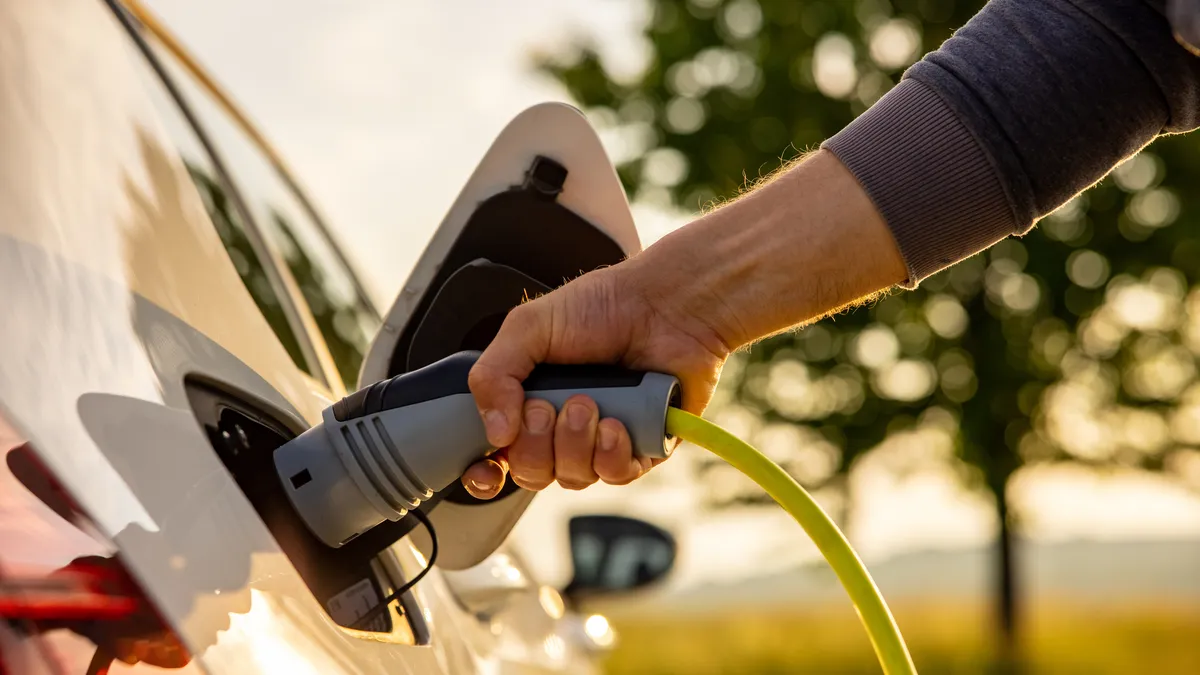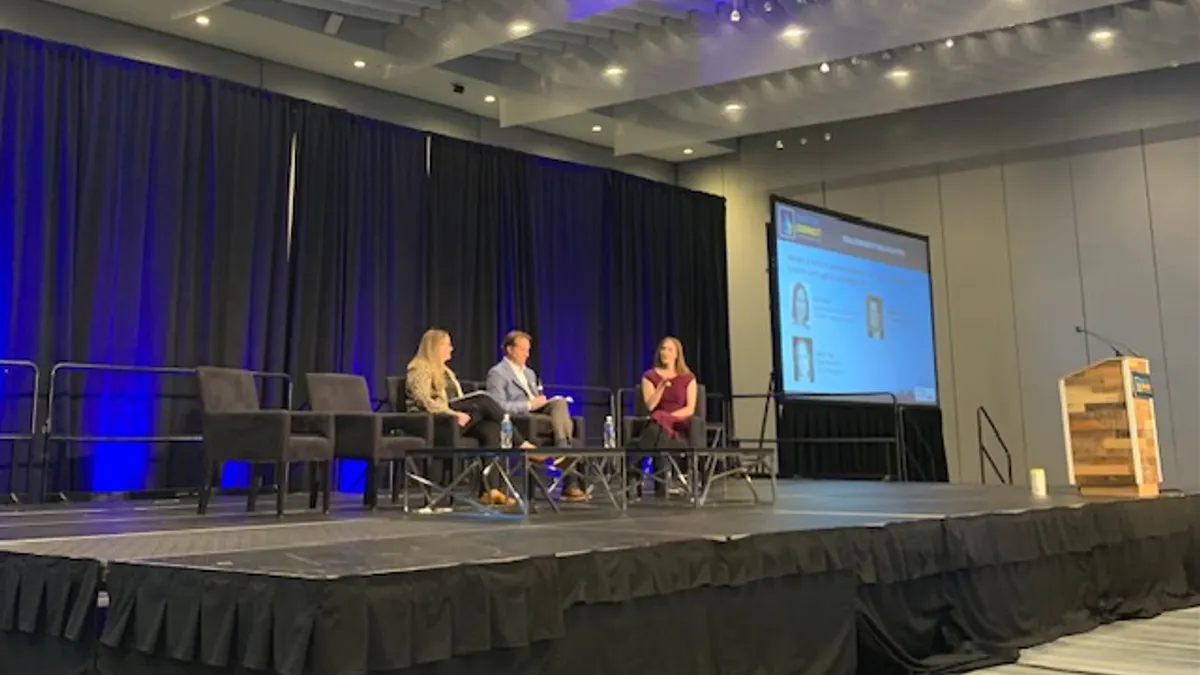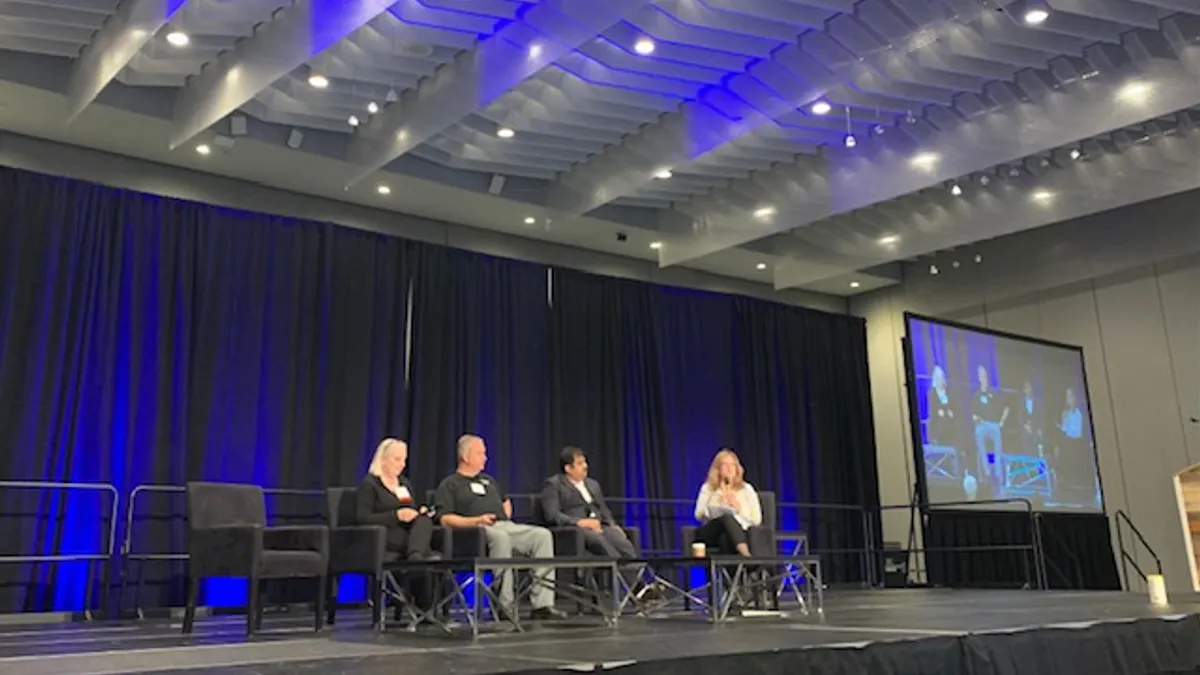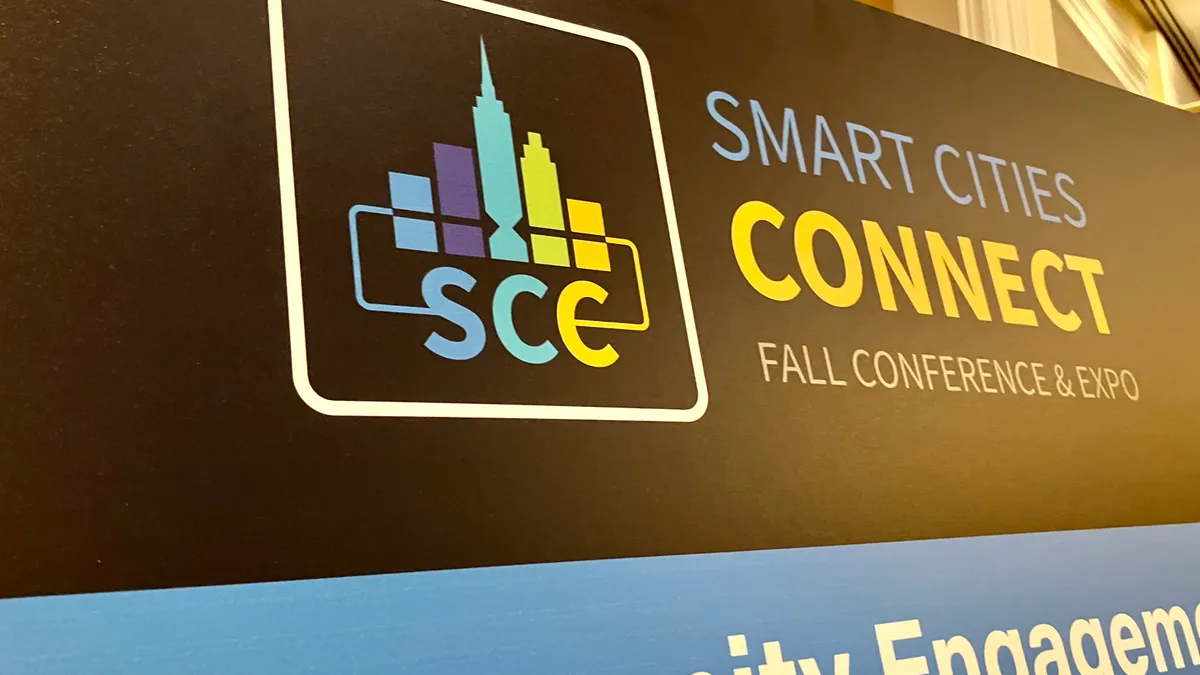For cities to enable widespread electric vehicle adoption, they must make charging accessible to people living in multifamily housing or condos. However, those residents typically lack a garage or carport where they can charge vehicles overnight.
There are numerous ways to address those issues, according to panelists at the Smart Cities Connect Fall Conference and Expo near Washington, D.C., last week. They include installing chargers along the curbside, at multifamily buildings, or in parking lots of common destinations such as grocery stores, libraries or parks.
But there is debate as to whether the EV buyers market should dictate the EV rollout or if the government should provide incentives to ensure chargers are built in the areas that need them, said panel moderator Antoine Thompson, who serves as executive director of the Greater Washington Region Clean Cities Coalition.
Panelists said there are opportunities for city leaders to partner with private companies to reach those communities.
It’s a “chicken and the egg” situation, said Brandon Jacobs, regional vice president of sales at the EV charger company, Blink Charging. “In many scenarios, people don’t want to put chargers in until there’s EVs and people don’t want EVs until there are chargers in the ground,” Jacobs said.
It’s not enough to just install chargers at multifamily homes, he said. To install curbside charging, EV charging companies like Blink need to work with cities and utilities to understand where the power’s coming from and determine where they can “pull more in.”
It’s also not possible for companies to install chargers along the public right of way without working with the local government, and they can’t service different neighborhoods without working with local neighborhoods or councils, said Belkys Cordero, director of marketing at BlueLA, an EV car sharing service supported by Blink Mobility.
When it’s looking to install a charging station, BlueLA works with different city departments — such as the department of transportation, local stakeholders and other constituents affected by the stations, she said.
“Do they really need it? Is it taking away their parking when we do this? What’s the balance?” Cordero asked. “I don’t think ... one party is responsible; I think we all come together to make it accessible to everybody.”
In San Antonio, Texas, many city residents cannot charge their cars in a garage overnight, said Julia Murphy, the city’s deputy chief sustainability officer.
The city evaluated its growing need for more chargers to keep up with the forecasted increase in EVs locally. It also considered commitments laid out in its climate and clean air plans. It then entered into a public-private partnership in which chargers were installed at some city-owned sites such as libraries, parks and parking garages, said Murphy.
The project aimed to get people more comfortable with buying an EV by making more chargers available. “We need some charging now just to get people over that scary hump, and then it can be the Wild West again,” Murphy said.
Thompson said sizable federal funds will soon help those populations, including billions to expand the nation’s EV charging infrastructure network and for communities in underserved areas through the bipartisan infrastructure law that was passed last year. Additional support will come from the Inflation Reduction Act that was passed in August.
EV charging companies like Blink are willing to invest in urban areas where there’s not currently much demand since residents there will eventually need access to public charging. Jacobs called those neighborhoods “a homerun for Blink.”
For city officials that are unsure about whether to invest in charging infrastructure for a specific area, letting a private company come in and take ownership of the effort can help the city “get their feet wet” in that area, he said. Blink often starts small in those areas by running power for 10 chargers but only installing two and building more as demand increases.
Planning for future demand now is important so a city doesn’t have to dig up concrete and run conduit again in a couple of years, he added.
Thompson said there are also technology companies that allow people to rent out private EV chargers — it’s similar to the Airbnb model.
And city officials can help encourage multifamily housing building owners to install EV chargers in their parking lots as a way to attract more tenants, said Jacobs.


















